#Perry-Castañeda Library
Explore tagged Tumblr posts
Text
A Walk Along Speedway Across Time



Entrance to Speedway from Deen Keaton St. 11 Mar 2019.

Engineering Education and Research Center (EER). UT Electrical and Computer Engineering (ECE). 30 Dec 2018.

Moffet Molecular Biology Building. 20 Mar 2019.
Wells Auditorium. Department of Chemistry. 1 July 2022.

Norman Hackerman Building (NHB) featuring Nancy Rubins' Monochrome for Austin, July 1, 2022.



The Bill & Melinda Gates Computer Science Complex / the Gates-Dell Complex. From top: 30 Mar 2018, 17 Dec 2019 (featuring Sol Lewitt's Circle with Towers), 13 Jan 2020.

Courtyard outside the William C. Powers Student Activity Center (WCP, formerly SAC). 21 Mar 2019.

Speedway in between McCombs CBA and Gregory Gym. 15 Apr 2021.



Left: McCombs School of Business CBA Hall of Honors (CBA North Entrance) from Speedway. 18 Jul 2018. Middle: Gregory Gymnasium featuring the Make it Y(our) Texas campaign. 6 Oct 2022. Right: View of Gregory Gym and McCombs CBA from Perry-Castañeda Library (PCL). 30 Dec 2019.



Left: New Undergraduate Admissions Center (attached to PCL). 15 May 2023. Middle: Inside the Perry-Castañeda Library (PCL). 21 Sep 2019. Right: View of Blanton Museum Smith Building (where the gift shop is) fro PCL. 30 Dec 2019.



Blanton Museum of Art. Top: Pictures from the Brazos St. side. 1 Mar 2019. Bottom: Blanton Museum of Art's Moody Patio, featuring Austin by Ellsworth Kelley and the Petals art installations. 15 May 2023.

End of Speedway on E. Martin Luther King Jr. Blvd: The Capitol Mall. 15 May 2023.
#UT Speedway#Engineering Education and Research Center#EER#UT Electrical and Computer Engineering#Moffet Molecular Biology Building#UT Biology#Wells Auditorium#UT Chemistry#Norman Hackerman Building#Nancy Rubins#Monochrome for Austin#Gates-Dell Complex#UT Computer Science#Circle with Towers#Sol Lewitt#William C. Powers Student Activity Center#SAC Courtyard#McCombs School of Business#McCombs (CBA)#Gregory Gymnasium#Perry-Castañeda Library#Austin by Ellsworth Kelley#Ellsworth Kelley#Blanton Museum of Art#Moody Patio#Texas Capitol Mall#Texas Capitol
0 notes
Text
The Sacred Band of Thebes
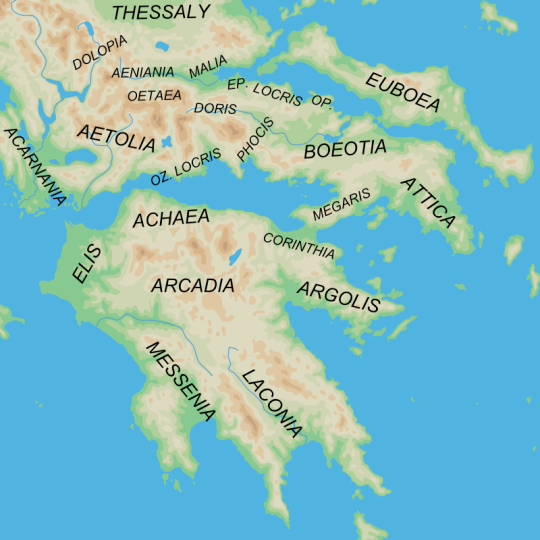
By original:Map_greek_sanctuaries-en.svg by Marsyasderivative work: MinisterForBadTimes (talk) - blank map from Map_greek_sanctuaries-en.svg by MarsyasGeographical information based on public domain map of Greece, from the Perry-Castañeda Library Map Collection, Historical Atlas by William R. Shepherd north, south, CC BY-SA 3.0, https://commons.wikimedia.org/w/index.php?curid=8965840
While the earliest surviving record of the Sacred Band of Thebes dates back to 324 BCE, Dinarchus, a speechwriter of Ancient Greece, claims that they go back to at least 371 BCE. Plutarch, Ancient Greek philosopher, biographer, essayist, historian, and priest, claimed that the Sacred Band was formed shortly after the expulsion of the Spartan garrison from the Theban citadel of Cadmea by Gorgidas around 378 BCE. Gorgidas was a boeotarch, a leader of the Boeotian Confederacy, which was founded in 379 BCE after cities in Boeotia rebelled against Spartan dominance. Other writers, such as Dio Chrysostom (about 40-120 BCE) and Heironymus of Rhodes (about 290-230 BCE), credit Epaminodas with the creation of the Sacred Band instead. It is generally accepted that the bad was created sometime between 379-378 BCE. There were also mentions of elite forces by Herodotus (about 484-425 BCE) and Tucydides (about 460-395 BCE). Herodotus described them as πρῶτοι καὶ ἄριστοι (the first and the finest) of the Thebans. Diodorus described a group of 300 picked men (ἄνδρες ἐπίλεκτοι) at the Battle of Delium (426 BCE) composed of pairs of heniochoi (ἡνίοχοι, "charioteers") and parabátai (παραβάται, "those who walk beside"), so it is possible that the Sacred Band has roots going back farther into history than Gorgidas and that he only reformed it.
Regardless of the exact origin, the band was chosen on ability and merit with no regard to social class. Each of the 300 men were paired with another in the band, creating 150 pairs. An older man known as an erastês (ἐραστής, "lover"), likely close to the age of 30, when it was typical for men to end their service, and a younger man known as a erômenos (ἐρώμενος, "beloved"), who was likely around 20-21, when they would have received their full set of armor. According to Plutarch, the pairs exchanged 'sacred vows between lover and beloved at the shrine of Iolaus (one of the lovers of Heracles) at Thebes' and these vows were the source of the 'sacred' appelation. Polyaenus, a Roman Maacedonian author and rhetorician who lived in the 2nd century, wrote that the men were 'devoted to each other by mutual obligations of love'.
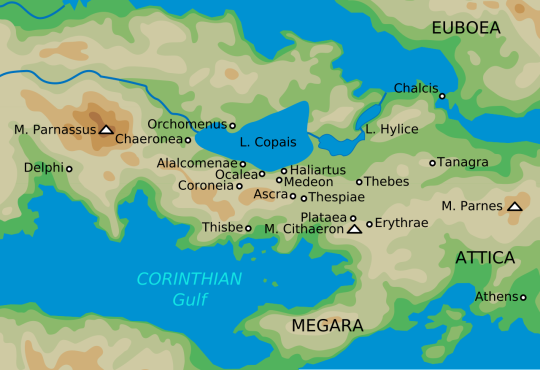
By User:Petrouchka; vectorized by Fulvio314 - This file was derived from: Boeotia ancient.png:, Public Domain, https://commons.wikimedia.org/w/index.php?curid=29022951
Exactly how far that relationship went is up for debate but it was believed that men would fight more intensely in defense of their 'beloved' than they would for someone who was merely a fellow army member. Plutarch wrote that Pammenes, a Theban military commander, thought that 'Homer's Nestor was not well skilled in ordering an army when he advised the Greeks to rank tribe and tribe … he should have joined lovers and their beloved. For men of the same tribe little value one another when dangers press; but a band cemented by friendship grounded upon love is never to be broken.' This was counter to the view of the Spartans, who abhorred placing 'too much significance on sexuality rather than talent'. This view possibly relates to the extensive use of of pederasty, where older men have a romantic relationship with a younger male youth as they are mentored.
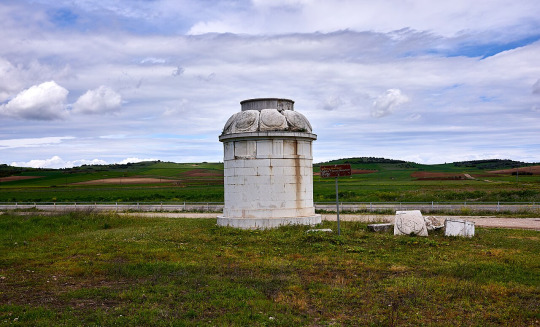
By George E. Koronaios - Own work, CC0, https://commons.wikimedia.org/w/index.php?curid=77921547
While largely accepted by historians, the historicity of the Sacred Band has been questioned by a few historians. These questions range from the description of the Sacred Band as being exaggerated for the purpose of oration to being Macedonian rather than Theban. Gordon S Shrimpton, a historian at the University of Victoria, Canada, noted that there wasn't much written about the Sacred Band by the Thebans between 371 and 341 BCE, and what there was usually downplayed or omitted their accomplishments. This could also be because the Thebans allied with or sympathized with the Persians during the second Persian invasion in 480 BCE and in 368 BCE. In 339 BCE, the Thebans allied with Philip II and joined the Pan-Hellenic alliance fighting against Macedonia, which led to the annihilation of the Sacred Band at Chaeronea, followed by the destruction of Thebes in 335 BCE. This caused the view of the Thebans to change for the positive by the Athenians. During this period is when the heroic accounts of the exploits of the Sacred Band of Thebes was written.
#ancient greek history#ancient greek military history#sacred band of thebes#ancient greece#ancient history
2 notes
·
View notes
Text
For anyone interested in some stupidly detailed military grade maps courtesy of the US Army. @nerdexer and @hessdalen-globe I'm thinking of you
#I tried to share one of Antwerp and it's literally too big for tumblr#1;100.000 and 1;50.000 scales I saw
7 notes
·
View notes
Text
If I may, I would to like to turn everyone’s attention Perry-Castaneda historical library map collection at the University of Texas (Austin)
Finding this was an absolute joy and I hope whoever sees this will have as much if not more of a nerd-gasm as I had.
2 notes
·
View notes
Text
Spring 2025 Finals Events

Students at Chillfest in December 2024
Longhorns, you’ve made it to the home stretch of the semester! The Division of Student Affairs is offering a great lineup of events to help students relax, recharge and prepare for final exams and projects. These events include free snacks, resources to help students succeed, and entertainment and activities for a study break.
Chillfest Monday, April 28, 12-4 p.m., Texas Union Ballroom
Disability Cultural Center Peer Support Sessions Monday, April 28, 1:30-3:30 p.m., Student Services Building, 3.200K
ND Voices Monday, April 28, 4-5 p.m., Student Services Building, G1.106
Open Study Space in the William C. Powers, Jr. Student Activity Center Monday, April 28- Monday, May 5; All rooms available daily until 10 p.m.
Finals Self-Care Pop Up with the Student Health Advisory Committee Tuesday, April 29- Wednesday, April 30, 11 a.m.-3 p.m., Perry-Castañeda Library, UFCU Room
ATXplained Live Tuesday, April 29, 6-9 p.m., Bass Concert Hall Space is limited. RSVP here.
Finals Fest Wednesday, April 30, 8 a.m.-12 p.m., Student Services Building Lobby
Wednesday Night Jazz Meeting with Rabbi Neil Blumofe (Live Music) Wednesday, April 30, 7-9 p.m., Cactus Café
Early Bird Biscuits Wednesday, April 30, 10 a.m.-12 p.m., Student Services Building, South Plaza
Best of luck to our students as they finish this semester strong!
#division of student affairs#ut austin#living the longhorn life#university unions#office of the dean of students#the university of texas at austin#healthy horns#cactus café
0 notes
Text

stacks at the Perry-Castañeda Library, UT Austin
#mine#book#books#library#libraries#study#studying#studyblr#studylustre#studyquill#intellectys#emmastudies#tbhstudying#studybuzz#warmhealer#thomastudies#studyspo
1K notes
·
View notes
Text
guys
http://legacy.lib.utexas.edu/maps/topo/250k/
maps
2 notes
·
View notes
Photo

So this is the start of my blog for the PCL library. First off, its full name is actually Perry Castaneda Library, and it is located very close to where I live and go to school, which is the University of Texas at Austin. It was designed by Bartlett Cocke and completed in 1977. Bit of interesting note, if you use your imagination and look at it the right way, you can kinda see that its shaped like Texas, although this wasn’t actually intentional. Still cool tho.
Tracé Etienne-Gray, “Perry-Castañeda Library,” Handbook of Texas Online, accessed September 14, 2020, https://www.tshaonline.org/handbook/entries/perry-castaneda-library.
1 note
·
View note
Text
Hackathon for Resilient Communities
*** Hack for Resilient Communities***
The Center for Transportation Research is hosting a hackathon in collaboration with Planet Texas 2050, Texas Advanced Computing Center, Perry- Castañeda Library, Dell Medical School, the City of Austin, Go Austin/Vamos Austin, and the Schools of Engineering and Community & Regional Planning. Please register for the event if interested and please pass this info along to your students and networks.
Date & Time: Sat. February 29, 2020, 10:30 AM- 7:30 PM Location: PCL Learning Lab 1
Description: Hack for Resilient Communities is a civic hack to address some of the most pressing challenges we face as Texans: transportation, pollution, weather, and health. We're looking for civic hackers of all stripes to design and implement software tools to improve community resiliency. Hackers will have access to real Austin data on pollution, weather, transportation, and health, as well as access to prototype custom and commercial data sensors. No previous hacking or programming experience is required and we encourage participants from any discipline and from all career stages to participate. Hackers will work in teams--you may assemble your own or create one on-site.
Food will be provided throughout the day and prizes will be awarded.
Registration Link
1 note
·
View note
Photo

Outdoor stairwell of the Perry–Castañeda Library @ The University of Texas at Austin
2 notes
·
View notes
Photo

Uniform got fashion (at Perry-Castañeda Library (PCL)) https://www.instagram.com/p/BwVjkaIhk94/?utm_source=ig_tumblr_share&igshid=7q7bvs2esayi
0 notes
Photo
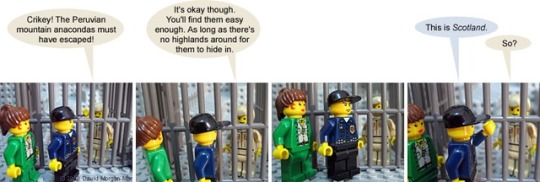
[Irregular Webcomic! #1946 Rerun](https://ift.tt/2HOWMwT)
Glasgow isn't quite in the actual Scottish Highlands, but it's close enough for some giant snakes.
Go find a map of Scotland. Wait a minute, what am I saying? This is the Internet! Here's one. :-) This map is copyright-free, since it is produced by the C.I.A., and is available in full from the astonishingly brilliant Perry-Castañeda Library Map Collection at the University of Texas.
Okay, had a good look? Scotland is at the north end of the United Kingdom. The Scottish Highlands cover the entire rugged looking region north of Glasgow. Note the intriguing feature of the geography, in that Inverness and Fort William are connected by an obvious straight line cutting across the peninsula. Along this line lies Loch Ness, the second largest but probably the most famous lake in Scotland. Loch Ness itself is highly elongated in shape, running directly along the line previously mentioned. This line is actually a long series of valleys, known as the Great Glen, cutting right across Scotland from one coast to the other, and bisecting the craggy highlands that rise on either side. All in all, it's a rather striking geological feature.
The Great Glen in fact, as some of you have no doubt realised by now, marks the location of a major fault in the Earth's crust. The land north-west of the fault has slipped northwards relative to the land south-east of the fault. And it doesn't stop in Scotland. The fault runs right through Ireland as well, straight through the bay near Londonderry that you can see on this map, and out the western side of that island.
Okay, now let's go even further afield. Take a look at this map of north-western Europe. (Click it for a larger version.)
There are mountains in Scotland. Where else do we see mountains? There's a whole big chain of them running up the back of Norway. In fact, with a tiny bit of imagination, you can picture the chain of mountains running along Scandinavia as continuing across the North Sea into Scotland. It makes a nice arc.
In fact, the mountains of Scotland and Scandinavia are part of the same mountain range. This immense range of mountains was produced during an event known as the Caledonian orogeny. Caledonia is the ancient Roman name for Scotland, and orogeny is a technical term combining the Greek oros, meaning mountain, and genus, meaning generation.
The generation of the mountains of Caledonia and Scandinavia occurred roughly 400 million years ago, at which time the continents of the Earth were in very different locations to where they are now. They were so different, that we can't even sensibly refer to them with our familiar names. At that time, there was an ocean known as the Iapetus Ocean. Don't go looking for it on a modern map, because it doesn't exist any more. On one side of the Iapetus Ocean was the continent of Laurentia. On the other side were two landmasses known as Baltica and Avalonia.
The movements of plate tectonics slowly but inevitably caused the shrinkage of the Iapetus Ocean, with Laurentia moving closer to Baltica and Avalonia, until the fateful period of history when these continents collided. In exactly the same way as the collision of India with Asia has more recently produced the crumpling of the Earth's crust that we know as the Himalaya Mountains, this titanic altercation gave rise to a great range of mountains.
The now combined landmasses of Laurentia, Baltica, and Avalonia eventually formed part of the single supercontinent of Pangaea, which existed around 250 million years ago. So this collision and mountain building was by no means a sudden thing; it took many millions of years to occur.
Pangaea eventually broke apart again into pieces, to form the continents with which we are familiar today. Baltica and Avalonia were essentially the forerunners of what is now Europe. The mountains of the Caledonian orogeny can be seen today, weathered and eroded into less spectacular peaks than the Himalayan heights which they may well have reached shortly after their birth, running down the spine of Scandinavia, across Scotland, and...
What became of Laurentia?
Take a look at this map. (The big version - click on this small one.)
Norway, Scotland... look west...
Look for mountains.
The Appalachian Mountains. That enormous range of mountains running diagonally across the eastern USA. You can mentally extend them north-east, up the peninsula of Maine and New Brunswick, across the Gulf of St Lawrence, across Newfoundland, and then... you are forced to a stop by the Atlantic Ocean.
Only imagine the ocean isn't there. Slide Newfoundland across to nestle next to Ireland. Then the Appalachian Mountains can continue right through the Scottish Highlands and on into Norway. We were looking for Laurentia. We've found it. Laurentia is North America.
The Appalachians are the same mountain range as the Scottish Highlands and the mountains of Scandinavia.
How do we know this? Because we can see the evidence in the rocks. If you examine the rocks and fossils of the Appalachians, you can see that these mountains were also generated around 400 million years ago, in an event known as the Acadian orogeny. So at this time, the Iapetus Ocean closed up, Laurentia, Baltica, and Avalonia collided, and produced an enormous range of mountains. Later, the movements of the plates of Earth's crust separated Laurentia from Baltica and Avalonia again, sundering the mountain chain in the middle, and producing the new (and still expanding) Atlantic Ocean between them. But let's have a closer look at the area where these great landmasses were ripped apart.
On the American side we have the island of Newfoundland. Here's what it looks like from space. Remind you of anything?
Have another look at Scotland (at the top of this annotation). Remember that Great Glen fault line running right across the country, from north-east to south-west? There's also a major dislocation running across Newfoundland, from north-east to south-west. It's so big, it almost separates the island into two pieces. Only a tiny isthmus remains to connect the bulk of the island to the irregular blobby peninsula dangling off the south-east corner. Note also that many of the obvious geographical features run north-east to south-west, just like the Appalachian Mountains, and the arc of Scotland to Scandinavia.
Now here's the really interesting bit. If you go to Newfoundland and have a look at the rocks and the fossils contained in them, you find that they confirm the idea that the island is really an extension of the Appalachian Mountains. The rocks and the ages of the fossils all match. Except for that almost-detached peninsula on the south-east of the island. There, the rocks are strangely very different. What's more, the fossils in the rocks are completely different to the fossils found on the rest of the island.
The fossils of the time when these rocks and mountains were laid down include a lot of graptolites and trilobites. These are great fossils for palaeontologists to find in rock beds, because they were very prolific across the world at the time, and because they varied with geographical distribution. The graptolites and trilobites found in one part of the world were noticeably different from those found in another part of the world. In particular, the fossils found on the Baltica/Avalonia side of the closing Iapetus ocean were very different from those on the Laurentia side. In other words, the graptolites found now in the Scottish Highlands are different to the ones found in the Appalachians, and to the ones found in Newfoundland.
Except for that dangling peninsula. The graptolites there are an exact match to the ones found in present-day Scotland. What's more, the rocks of the peninsula themselves are of a type not found elsewhere on Newfoundland, or in the Appalachians, but are precisely the same as the rocks found in Scotland.
Well, not all of Scotland. The rocks and fossils found in the highlands west of the Great Glen are very peculiar. They don't look like anything seen anywhere else in Scotland. What they look like, in fact, is rocks and fossils from the western side of Newfoundland.
When Laurentia collided with Baltica and Avalonia, the Laurentian side ended up with a characteristic set of rocks and fossils, and the Baltica/Avalonia side gained a different set of rocks and fossils. Hundreds of millions of years later, when the Atlantic Ocean ripped the melded continents apart once more, it didn't use the same boundary to separate them. Laurentia left behind a part of itself. The north-western part of Scotland used to be part of what is now North America. And the south-eastern tip of Newfoundland used to be part of what is now Europe.
Anyone who knows Canadian geography reasonably well will know that that part of Newfoundland is called the Avalon Peninsula. It was the evidence from this part of Newfoundland that allowed geologists to piece together the history of the North Atlantic and the continents on either side, and this is why they decided to call the proto-continent that would later become the bulk of Europe: Avalonia.
2019-03-23 Rerun commentary: I must admit my own knowledge of Canadian geography before writing this annotation wasn't quite up to scratch. I could tell you roughly where Newfoundland was, but didn't really know much beyond that and a basic knowledge of the other provinces and a handful of major cities. Usually, unless you're visiting, there's not really much need to know geography of foreign places. It's nice to know, but not knowing isn't really going to bother most people. Geographical knowledge is highly concentrated in the areas where you live and work. You know names of streets, and intersections, and where certain businesses are located, and even finer details like where you can find mailboxes and bus stops and a bench to sit on. And expanding your circle, you probably know the names of all the cities and towns within a few hours drive, and you have a general idea of places in your own country further afield. But think about a country on the other side of the world and you may be lucky to be able to name the capital city, let alone any of the political subdivisions or second-tier cities and towns, or identify any of them on a map. In the future, people living on Mars are going to know all the craters and valleys and stuff around them, but won't be able to locate North America on a map of Earth.
0 notes
Text
Enjoy End-of-Semester Festivities
Whether you are studying for finals or gearing up for winter break, we’ll help you fuel up, chill out and get in the holiday spirit. We’re excited that many of the events in the lineup below are back in person after a two-year hiatus during the virtual learning environment. Don’t miss out – join our Division of Student Affairs team at the events below!

Students participate in Gingerbread House Decorating Contest in December 2020
Gingerbread House Contest Monday, Nov. 29-Friday, Dec. 3, J2 and Kins Dining Have fun being creative and enter University Housing and Dining’s gingerbread house decorating contest.

Chillfest in December 2019
Chillfest Wednesday, Dec. 1, noon–3 p.m., Shirley Bird Perry Ballroom, Texas Union Wind down with hot chocolate, snacks, crafts, chair massages and therapy animals at this University Unions event.

F45 Training
F45 Training Free Week Monday, Nov. 29-Friday, Dec. 3, Recreational Sports Center Energize your mind with a fitness break–try an F45 Training class for free! Reserve your spot today.
Winter Wonderland Feast Thursday, Dec. 2, 4:30-9 p.m., J2 and Kins Dining Treat yourself to a gourmet dinner, dessert bar and seasonal sips at this University Housing and Dining dinner.
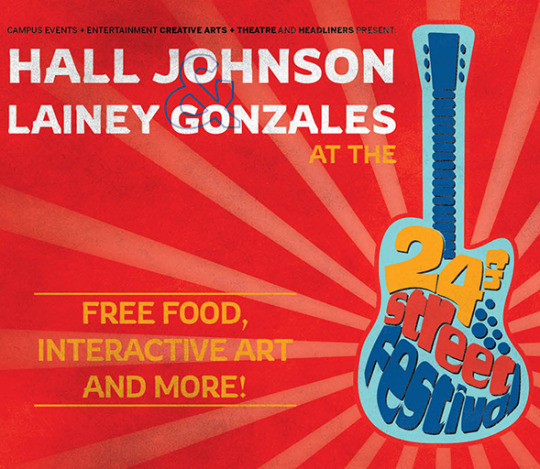
The 24th Street Festival Thursday, Dec. 2, 5-8 p.m., East Patio, Texas Union Catch some live music and browse local art at this festival hosted by University Unions’ Campus Events+Entertainment.

Holiday Craft Night Thursday, Dec. 2, 5:30-7 p.m., Quadrangle Room, Texas Union Decorate holiday-themed cookies, create poinsettia wall décor and make other crafts with Vice President for Student Affairs. Please RSVP.

Open Mic Night at the Cactus Friday, Dec. 3, 7-9 p.m., Cactus Café, Texas Union Spend your Friday night relaxing to live music in this historic University Unions’ music venue.

Cookies and Caffeine in May 2018
Cookies and Caffeine Monday, Dec. 6 & Tuesday, Dec. 7, 8:30 p.m.-while supplies last, Cypress Bend Cafe, Jester Java and Kin’s Market Hit the books with a cup of coffee and cookie thanks to University Housing and Dining.
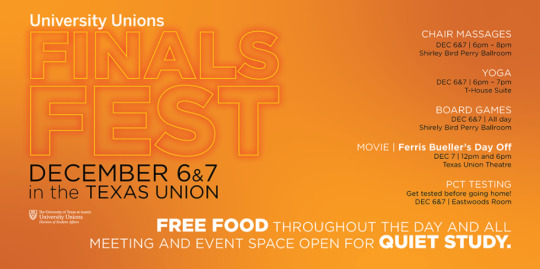
Finals Fest Monday, Dec. 6 & Tuesday, Dec. 7, Texas Union Enjoy FREE food and activities including chair massages and board games. Meeting and event spaces will also be open for quiet study.

Flavors of Austin: Churro Co. Tuesday, Dec. 7, 1-3 p.m., West Mall Satisfy your sweet tooth with a churro courtesy of Vice President for Student Affairs.

Hot Chocolate Hang Out Tuesday, Dec. 7, 2-5 p.m., Longhorn Wellness Center (SSB 1.106) Take a break with the Voices Against Violence team and Longhorn Peer Educators at this meet and greet. Enjoy hot chocolate, ciders and snacks.

Fuel Up for Finals Tuesday, Dec. 7 & Wednesday, Dec. 8, 11:30 a.m-2:30 p.m., Perry-Castañeda Library Plaza Fuel your study session with sleep kits, treats and other fun things compliments of the Longhorn Wellness Center, SHIFT and BeVocal.
Finals Support Space with the Longhorn SHARE Project Tuesday, Dec. 7 & Wednesday, Dec. 8, 6:30-10:30 p.m., STEM Learning Spaces 2 & 3, Perry-Castañeda Library Feeling stressed and overwhelmed about finals? Trained peers will be available if you need a buddy or shoulder to lean on.
Free Coffee and Pastries Tuesday, Dec. 7 & Thursday, Dec. 9, 6 p.m.-supplies last, Perry–Castañeda Library Lobby Enjoy a free coffee and pastry courtesy of Longhorn Hospitality, a collaboration between University Housing and Dining and University Unions.
Strategies for Stress Management: Finals Edition Wednesday, Dec. 8, 12-12:30 p.m., Perry–Castañeda Library Learning Lab 2 or Zoom (Zoom ID: 216 512 0629) Learn mindfulness techniques for managing stress during finals and everyday life.

Flavors of Austin: Mmmpanadas Thursday, Dec. 9, 11 a.m.–1 p.m., Jester Corner Spice up your study break with an empanada from the Vice President for Student Affairs team.
In addition to these events, you can also take a study break at two MindBody Labs on campus and with our Thrive at UT mobile app designed to enhance student well-being.
Stay safe during the winter break by following this COVID-19 testing guidance from University Health Services and check out these tips from the Counseling and Mental Health Center about going home for the holidays. Don’t forget, the 24/7 Crisis Line at 512-471-2255 (CALL) is a resource for you even during the winter break.
We hope you enjoy these events – we’re wishing all of you a safe and healthy holiday season!
#Division of Student Affairs#University Unions#University Housing and Dining#campus events + entertainment#University Health Services#Recreational Sports#Counseling and Mental Health Center#Finals#Study Spaces#Health#Nutrition#The University of Texas at Austin#UT Austin#Forty Acres#Longhorns#Counseling and Mental Health Center Crisis Line
3 notes
·
View notes
Photo

(via Greece-at-the-Beginning-of-the-Peloponnesian-War-431-BC--56aaa1bd3df78cf772b45afc.jpg (768×754))
Greece at the Beginning of the Peloponnesian War (431 B.C.) Perry-Castañeda Library Historical Atlas by William R. Shepherd http://www.lib.utexas.edu/maps/
1 note
·
View note
Text
The Library’s Jewish and Hebrew collection
As should be obvious, this library holds a huge collection of books, scripts, maps, and other forms of physical information and data. One of these collections is the Judaica and Hebraica collection, which include over a 2000 collection of English, German, and Hebrew titles written from circa 1800s to mid 1900s. This collections also consists of one of if not the largest collection of Yiddish materials (reading, audio, etc) found in the United States. Much of the titles found in this collection are nonfiction, though some are also fiction. Overall, this collection is a great start for one who plans on studying or interested in the lives, cultures, and history of the Jewish and Israelite communities.
Green, Holly. “A Research Guide to the Judaica & Hebraica Collection at the Perry‐Castañeda Library The University of Texas at Austin for Hebrew Studies.” University of Texas at Austin, The School of Information, 2009, pp. 1–22. Accessed September 15, 2020
https://repositories.lib.utexas.edu/bitstream/handle/2152/7859/hebrew-studies-research-guide.pdf?sequence=3
0 notes
Photo

The Dark Origins Of Valentine's Day If you don't know here's some Insight on why we black people should not celebrate this pagan holiday. A drawing depicts the death of St. Valentine — one of them, anyway. The Romans executed two men by that name on Feb. 14 of different years in the 3rd century A.D. Though no one has pinpointed the exact origin of the holiday, one good place to start is ancient Rome, where men hit on women by, well, hitting them. Those Wild And Crazy Romans From Feb. 13 to 15, the Romans celebrated the feast of Lupercalia. The men sacrificed a goat and a dog, then whipped women with the hides of the animals they had just slain. The Roman romantics "were drunk. They were naked," says Noel Lenski, a historian at the University of Colorado at Boulder. Young women would actually line up for the men to hit them, Lenski says. They believed this would make them fertile. The brutal fete included a matchmaking lottery, in which young men drew the names of women from a jar. The couple would then be, um, coupled up for the duration of the festival — or longer, if the match was right. The ancient Romans may also be responsible for the name of our modern day of love. Emperor Claudius II executed two men — both named Valentine — on Feb. 14 of different years in the 3rd century A.D. Their martyrdom was honored by the Catholic Church with the celebration of St. Valentine's Day. Later, Pope Gelasius I muddled things in the 5th century by combining St. Valentine's Day with Lupercalia to expel the pagan rituals. But the festival was more of a theatrical interpretation of what it had once been. Lenski adds, "It was a little more of a drunken revel, but the Christians put clothes back on it. That didn't stop it from being a day of fertility and love." Around the same time, the Normans celebrated Galatin's Day. Galatin meant "lover of women." That was likely confused with St. Valentine's Day at some point, in part because they sound alike. William Shakespeare helped romanticize Valentine's Day in his work, and it gained popularity throughout Britain and the rest of Europe. Perry-Castañeda Library, University of Texas Shakespeare In Love As the years went on, the holiday grew sweeter. Chaucer and Shakespeare romanticized it in their work, and it gained popularity throughout Britain and the rest of Europe. Handmade paper cards became the tokens-du-jour in the Middle Ages. Eventually, the tradition made its way to the New World. The industrial revolution ushered in factory-made cards in the 19th century. And in 1913, Hallmark Cards of Kansas City, Mo., began mass producing valentines. February has not been the same since. Today, the holiday is big business: According to market research firm IBIS World, Valentine's Day sales reached $17.6 billion last year; this year's sales are expected to total $18.6 billion. But that commercialization has spoiled the day for many. Helen Fisher, a sociologist at Rutgers University, says we have only ourselves to blame. "This isn't a command performance," she says. "If people didn't want to buy Hallmark cards, they would not be bought, and Hallmark would go out of business." And so the celebration of Valentine's Day goes on, in varied ways. Many will break the bank buying jewelry and flowers for their beloveds. Others will celebrate in a SAD (that's Single Awareness Day) way, dining alone and binging on self-gifted chocolates. A few may even be spending this day the same way the early Romans did. But let's not go there.
1 note
·
View note